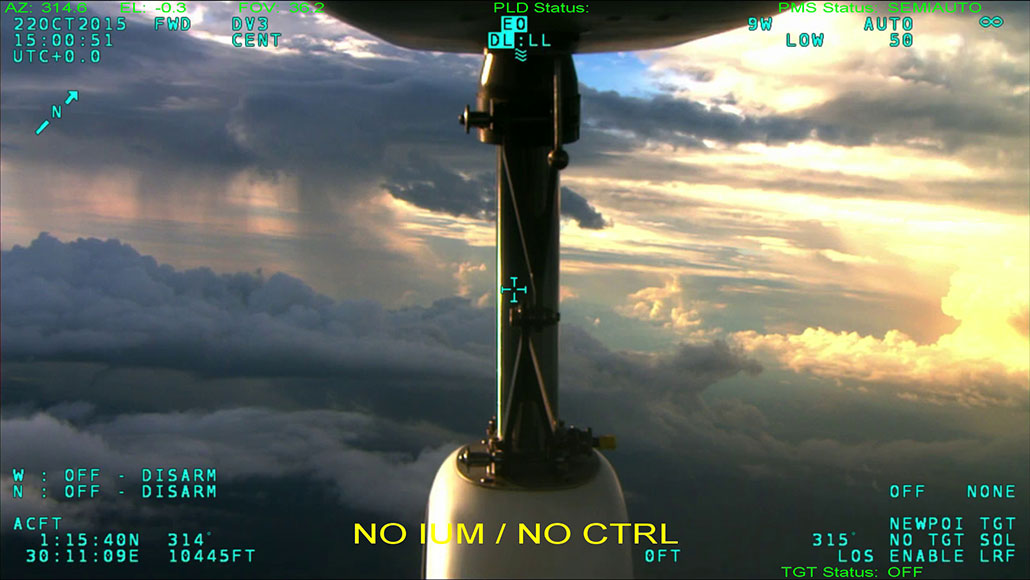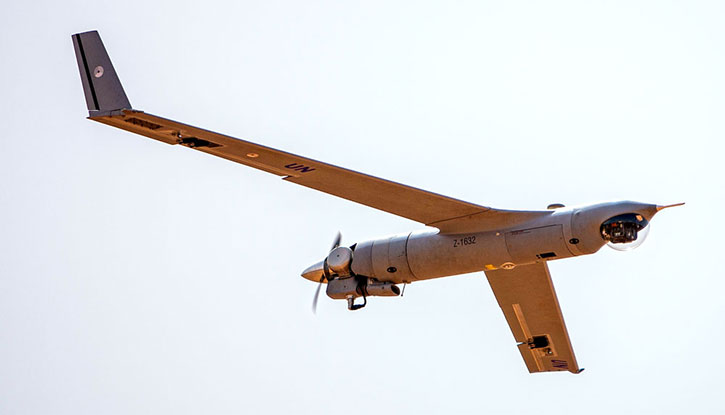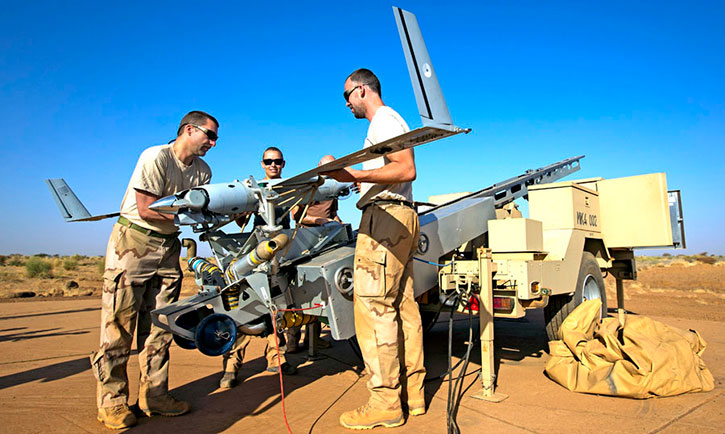
Drones are becoming a relatively common tool for peacekeeping. The first deployment started just over two years ago in the Democratic Republic of Congo (DRC). In 2013 the UN leased five Falco UAVs from Selex ES, a subsidiary of the Italian Leonardo group. The UN leased the Falcos for three years and deployed them to Goma, in Eastern Congo, to help monitor armed groups operating along Congo’s border zone with Rwanda and Uganda.
Though the UN has been careful to present the deployment as temporary and confined to the DRC, it was a turning point in UN peace missions. In their first year of operation, the Falco drones suffered some setbacks during their deployment in Goma, although the overall mission is considered a success. UN Secretary General Ban Ki Moon said the drones have proved useful in providing peacekeepers in the region “responsive, controlled, and timely source of information, particularly regarding supplementing the force’s intelligence, surveillance, and reconnaissance efforts against the illegal activities of armed groups.”
Operating in the tropical weather, over thick forests and rugged terrain, was not a simple mission. The scarcity of roads on Congo’s eastern border with Rwanda and Uganda made the control of this resource-rich territory, an important mission for MONUSCO. The Falco also proved its ability to save lives in events of emergency. On 5 May 2014, the Falco operators spotted a boat capsized in Lake Kivu near Goma and helped to direct rescuers to save 14 of the passengers.

The Ivory Coast was considered to be the second theater for UN drone operation, to compensate for the drawdown of peacekeeping forces in the country. Abidjan requested the deployment of surveillance drones along its border with Liberia, to make up for that force reduction but UN officials refused, claiming that “The deployment of UAVs in (Ivory Coast) may no longer be warranted.
The decision concerning its northern neighbor Mali was different. The Malian government is grappling with a national security crisis in which the weak army is battling a resurgent Tuareg separatist rebellion and a host of armed Islamist groups with links to Al-Qaeda in the Islamic Maghreb (AQIM). By the end of 2013, the UN moved in with the ‘International Brigade’, as part of MINUSMA, a strong peacekeeping force replacing the French forces that fought the rebels since 2013. However, despite the strong presence, the security situation in Mali has deteriorated, leading to increased armed attacks and massacres of civilians inside and outside refugee camps, foreign aid workers, and UN personnel.
The Malian Government approved the operation of unarmed drones by the UN Peacekeepers; the first unit to operate such systems was the Swedish intelligence unit with 250 personnel. They operate their AAI/Textron Systems’ Shadow 200 Tactical UAVs from Camp Noble near Timbuktu. UAVs are in high demand in Mali, where the Swedish TUAVs performed twice as large a flying time, compared with the Afghanistan mission. Also, patrols are using Mini UAVs such as Raven and Puma, to gain an aerial view, before they move into sensitive areas.

The Royal Dutch Air Force deployed to Mali a ‘manned/unmanned’ detachment comprising Boeing AH-64 Apache attack helicopters and Boeing/Insitu Scan Eagle tactical UAVs. These drones operated from Gao, in the southeastern part of Mali, from where they flew over 1000 hours, assisting patrols and supply convoys supporting MINUSMA from the air. Unlike the Italian drones that were operated by the contractor, the Dutch and Swedish systems were operated and supported by Swedish military personnel.
Both Scan Eagle and Shadow were launched by catapult from their forward bases to support forces tens of kilometers from the base. The Shadows used the paved runway at Camp Noble; the Dutch operators used the Scan Eagle’s ‘Skyhook’ to retrieve the drone in flight.
Although the Shadow TUAV was designed to work in severe conditions, the extreme operational environment in the Saharan desert is taking its toll. Engines overheating in the hot desert, and systems clogged after dust storms were frequent events. Fuel supply and enhanced field support are also issues of concern, requiring expensive military supplies. Due to their limited range and payload capacity, the Swedish RQ-7B Shadows are over-used and are expected to reach the end of their operational life when they complete their mission in Mali next year.
To minimize the burden on contributing countries, the UN has invited independent contractors to support future drone operations. Going forward the UN and contributing countries are expected to lease drones from the manufacturers and operators, for several years. In addition to the drone, systems contractors will provide staff to control and support UAS and provide analysis of data received working closely with UN mission contacts.


















